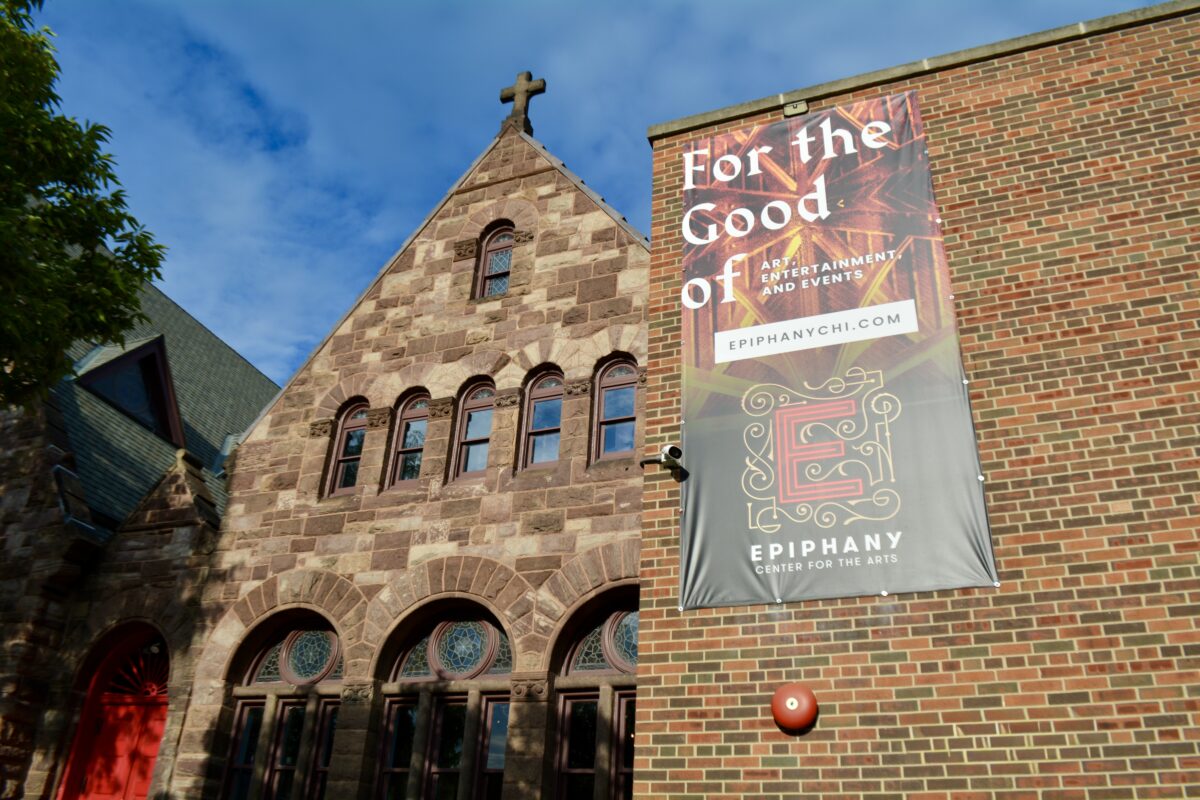Frederick Allen Hampton Sr. was born in Cook County on August 30, 1948 and raised in suburban Maywood. Oppression and the color of his skin forced him into a role of activism, and ultimately he became the Chicago leader of a revolutionary movement. Hampton co-founded the Illinois chapter of the Black Panther Party and organized a multiracial alliance of revolutionary organizations called the Rainbow Coalition in the 1960s.
He served the movement from 1966 until December of 1969, when he and another Black Panther, Mark Clark, were assassinated as they slept by Chicago police.
Kimberly Rachal and David Chase were married at The Church of the Epiphany, located just a short drive from where Hampton and Clark were assassinated twenty-seven years earlier. The church was built in 1885, but a century later, the congregation was dwindling. Afraid of losing the church to condominiums, Kimberly and David acquired the property.
After three years of planning and two years of construction, they opened Epiphany Center for the Arts in 2020. Before construction began, Nike used the church sanctuary to host more than 1,000 kids for an eight-week basketball camp. Around the same time, I met David through Chicago Action Sports. I had proposed an exhibition on the history of Chicago graffiti, with the intent to capture its rich history and pay homage to the oppressed who created the movement for our city.
In 2021, I interviewed Kimberly and David on public access television where I hosted a non-profit love hotline talk show. We talked about the church, its history and mission, and our exhibition, “Family Resemblance: The Evolution of Chicago-Style Graffiti.” For two years, we held storytelling and panel discussions, and on Chicago’s 185th birthday, we held an art exhibition featuring the ten recognized pioneers.
Kim explained that when Hampton was alive, the church allowed the Black Panthers to have weekly meetings and rallies at the Church of the Epiphany. It was then that the nickname “the people’s church” was coined by the members and followers. She noted how it was a reflection of how the church has always been there for the community, no matter the community.
While the Epiphany Center for the Arts is now a space for live performances and shows, its history is ever-present. The cafe and bar area was originally a men’s shelter. In 1953, the church established a nursery for children from underprivileged families.
At the time of our 2021 interview, Epiphany had just received the Richard Driehaus Award for Adaptive Reuse. The center, which is now protected as an architectural landmark, aims to bring social equity to the table with community-based programs as well as taking the care to restore and preserve the building.
“That our growth and the awareness of Epiphany is organic, and in many ways we feel the presence of a spirit,” David said. ”In your life, when you feel that wind start pushing on your back a little bit, you know, most of us are running into the wind, facing the wind, and fighting in life—but try to sense the wind when it’s at your back, and when you feel it, just go with it. And it will be amazing where that can take you. So, feel the wind!”
Epiphany Center for the Arts, 201 S Ashland Ave. (312) 421-4600, epiphanychi.com
Dulce Maria Diaz was born in Tumbiscatío de Ruiz in Michoacán, Mexico and raised in Chicago. She is a multidisciplinary self-taught artist. Following her study of Business for Artists at the University of Chicago, Dulce founded an arts and education non-profit organization, S.H.E. Gallery (Sharing Her Energy Gallery) in 2015. She is an adjunct lecturer for the Art Institute and works with other educational organizations such as Art Muse Chicago and Childhood Victories, as well as leading mural art clubs with Chicago Public Schools.

